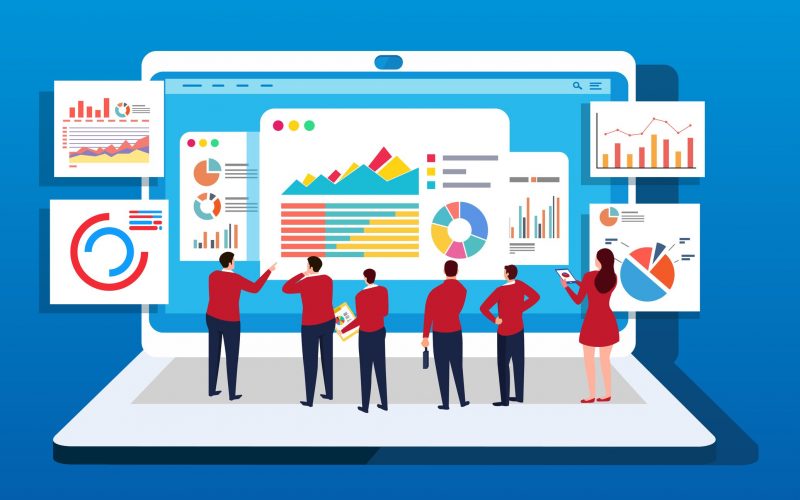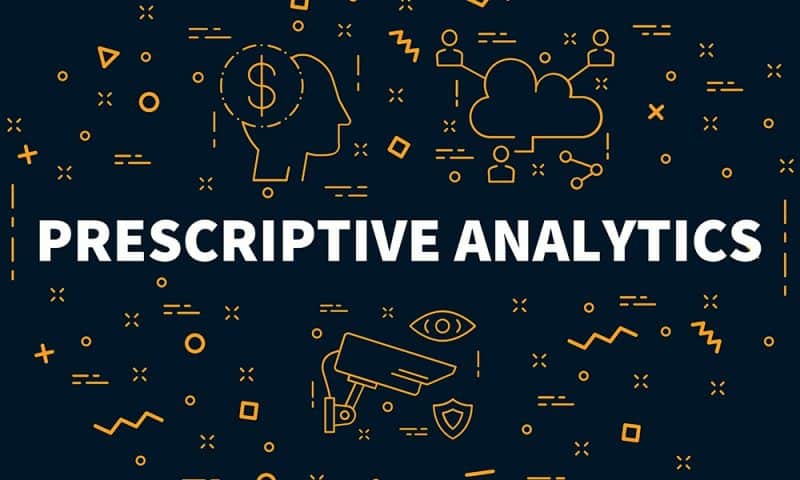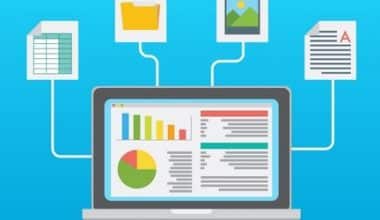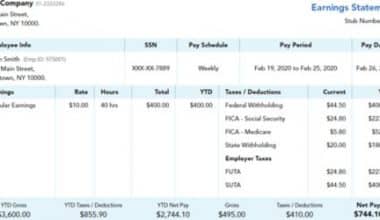Some of the most successful businesses across the globe are those that constantly make learning and adaptation a habit. Regardless of the field of operation, it’s critical to always understand and analyze what’s happened in the past, what’s happening now, and what might happen in the future. But the big question is, how do businesses go about this? Well, the answer starts and ends with simply understanding the different types of data analytics.
In recent times, however, there’s been a shift beyond the conventional types of analytics we are accustomed to. Times are changing together with a whole lot of processes, including in data/business analytics. And like we know from science, the plan is always to move from the known to the unknown. But that’s something I will unveil at the end of this post.
In the meantime let’s begin with the basics…
Overview
Most businesses collect data on a regular basis, yet this data is meaningless in its raw form. What matters is what you do with the information. Data analytics is the process of analyzing raw data in order to uncover patterns, trends, and insights that might provide valuable information about a certain business area. These data-driven insights are then leveraged to make wise decisions.
However, the kind of insights you can derive from your data is determined by the type of analytics you set into motion. And for confirmation sakes, there are four types of analytics; descriptive, diagnostic, predictive, and prescriptive.
So if you’re ready to understand how the different types of analytics work and why they are a very useful tool in business growth, then I urge you to stay glued to your device a little longer.
Meanwhile, if you’re looking for a specific type of analytics, use the clickable menu above to get to the appropriate section.
Read Also: 7 business growth hacks for 2021 [with guide]
What are the Different Types of Analytics
The following are the different types of analytics that also cover the process of data and business analytics.
#1. Descriptive analytics (What Happened?)
The goal of descriptive analytics, as the name implies, is to simply report what has happened in the past. It does not attempt to explain why something occurred or try to construct cause-and-effect links. The main purpose is to present a digestible snapshot.
Google Analytics is a fantastic example of descriptive analytics in action. It gives you a quick summary of what’s been going on with your website. For example, how many visitors you’ve had in a specific time period or where they came from. Similarly, systems like HubSpot will show you how many individuals opened a specific email or participated in a campaign.
But then, there are two basic techniques that come into play in descriptive analytics; data aggregation and data mining. The process of gathering and presenting data in a summary format is known as data aggregation.
(Assume that an e-commerce company collects a variety of information on its customers and visitors to its website. The aggregate data, also known as summary data, would give a broad overview of the larger dataset. This includes the average client age or the average number of purchases made).
On the other hand, the process of finding patterns, correlations, and anomalies within massive data sets to forecast outcomes is known as data mining. Simply put, this is when the analyst looks over the data to see if there are any patterns or trends. A visual depiction of the data, such as a bar graph or a pie chart, is the result of descriptive analysis.
As a result, descriptive analytics condenses enormous amounts of data into a clear, basic summary of what occurred. As we’ll see later, this is often the starting point for more in-depth analysis.
#2. Diagnostic Analytics (Why did it happen?)
This is the type of analytics that tries to figure out why something happened by digging deeper. Diagnostic analytics’ primary goal is to find and respond to anomalies in your data. For instance, if your descriptive analysis reveals a 20% reduction in sales for the month of March, you’ll want to figure out why. A diagnostic examination basically helps you through that.
Applications of Diagnostic Analytics
Using this type of analytics, the analyst looks for any new data sources that could provide more insight into why sales are down. They might go further and discover that despite a high volume of website visitors and a high number of “add to cart” actions, only a small percentage of visitors actually make a purchase. Further investigation may reveal that the majority of clients dropped out at the time of entering their delivery address.
This gives the analyst a clue as to what the problem is… The issue could be with the address form; probably it loads wrongly on mobile devices, or it was simply too long and inconvenient. You’re getting closer to finding an answer for your data anomaly if you probe a little deeper.
But then, diagnostic analytics isn’t just for diagnosing problems; it can also be used to figure out what’s causing favorable outcomes.
#3. Predictive Analytics (What will happen in the future?)
Predictive analytics aims to foresee what will occur in the future. This is, however, feasible on the basis of past patterns and trends which will help to estimate the chance of a future event or outcome in businesses.
Predictive models literally create predictions based on the relationship between a collection of variables. For example, you could use the correlation between seasonality and sales numbers to forecast when sales are would fall. So, if your predictive model predicts that sales will fall in the summer, you can utilize this information to create a summer-themed promotional campaign or reduce spending elsewhere to compensate for the seasonal drop.
On the other hand, you may run a restaurant and want to know how many takeout orders you’ll get on a regular Saturday night. Results from this type of analytics could help you decide to hire an extra delivery driver.
Furthermore, predictive analytics includes a component called machine learning. Basically, machine learning models are designed to discover patterns in data and automatically evolve in order to produce correct predictions. This is similar to humans using predictive analytics to devise models and estimate future outcomes. However, as you can tell, there are tons of differences between human-led analytics and automatic.
So in general, predictive analytics is used to anticipate a wide range of future outcomes, and while it may never be 100% correct, it does remove a lot of the guesswork. This is pretty much the most important piece when it comes to making business decisions and determining the best course of action.
#4. Prescriptive Analytics (What is the best line of action?)
To help determine the best line of action, prescriptive analytics examines what has happened in the past, why it has happened, and what may happen in the future. To put it another way, prescriptive analytics explains how to best take advantage of descriptive, diagnostic, and predictive analytics.
However, it is the most difficult type of analysis to perform. This is because it incorporates a whole lot including algorithms machine learning, statistical approaches, and computational modeling procedures.
Basically, a prescriptive model evaluates all of the different choice patterns or pathways that a corporation could take, as well as their likely effects. This lets you visualize how each set of decisions might affect the future, as well as quantify the influence of a specific decision. Moving on, the organization will be able to determine optimal routes to take based on all of the conceivable scenarios and consequences.
Maps and traffic apps are common examples of prescriptive analytics in action. Google Maps will examine all available forms of transportation (e.g. bus, walking, or driving), current traffic conditions, and probable roadworks when calculating the optimal route to get you from point A to point B.
Prescriptive models are used in a similar fashion to compute all of the different “routes” a corporation could take to achieve its objectives; with the best option in view. And knowing what actions to take for the best odds of success is a huge advantage for any company. Hence it’s no surprise that prescriptive analytics plays such a big part in business.
Cognitive Analytics
Cognitive analytics is a branch of analytics that attempts to mimic the human brain by drawing inferences from existing data and patterns, drawing conclusions based on existing knowledge bases, and then re-inserting the information back into the knowledge base for future inferences – a self-learning feedback loop.
Semantics, artificial intelligence algorithms, deep learning, and machine learning are just a few of the clever technologies that make up Cognitive Analytics. A cognitive application can learn from its interactions with data and humans and grow more intelligent and successful over time by employing these strategies.
So, in simple terms, businesses do not need to make decisions manually based on data from the four types of analytics. Cognitive analytics takes care of that automatically.
What Are the 5 Types of Analytics?
Contrary to popular misconception, there are just four types of analytics and not 5 types. These include Descriptive. Predictive, Prescriptive, Diagnostic analytics.
What Are the 4 Types of Analytics?
The 4 types of analytics are Descriptive. Predictive, Prescriptive, Diagnostic analytics
What Are the 4 Types of Business Analytics?
The 4 types of business analytics include Descriptive. Predictive, Prescriptive, Diagnostic analytics
What Are the 3 Pillars of Analytics?
Advanced data analytics is built on three pillars: speed, agility, and performance, all of which are required to realize its full potential. These pillars help to boost analytics strategy and improve your business in various ways.
What Are Basic Analytics?
Data analytics is classified into four types: descriptive, diagnostic, predictive, and prescriptive. These four types of data analytics, when combined, can assist an organization in making data-driven decisions.
Key Takeaways
In some respects, data analytics is similar to a treasure hunt. You can figure out what your next move should be based on clues and insights from the past. All types of businesses and organizations may utilize their data to make better decisions, invest intelligently, enhance internal procedures, and ultimately raise their chances of success with the correct type of analysis.






